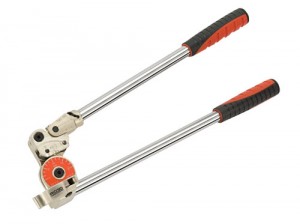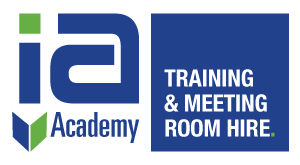Tube bending is a metal forming process used to permanently shape pipe or tubing. Bending is an important part in the process of manufacturing industrial pipe and tubing. Pipe can be bent into single or multiple bends and angles depending on what is required by the application.
There are a number of processes used to bend pipes dependent on what the pipe is going to be used for. Uses for pipes and tubes when bent are both structural; for example, handrails, handlebars, frames for cars, and furniture, or for transporting gases and liquids, such as water lines, hydraulic systems, and exhaust lines.
What Happens when Pipe is Bent?

As a process tube bending starts with loading a tube into a pipe bender and clamping it into place between two dies, the clamping block and the forming die. The tube is also loosely held by two other dies, the wiper die and the pressure die.
Bends are made by forcing tube against a die to make it change shape. Other methods include pushing a pipe through rollers to force it into a curve.
If you are bending pipes or tubes you need to take note of the following considerations:
- Size and wall thickness of the work piece
- Materials to be bent
- Number of bends in the part
- Proximity of the bends to one another (distance between bends, if any)
- Plane of bend relationship to one another
- Production rates
- Finished part tolerances (such as for wall thinning and point-to-point dimensions)
- Centreline radius of the bends
- Initial cost of equipment (plus training, service, support, repair parts, and tooling)
- Return on investment
Basic tools used in pipe bending are:
- Bend die – tube bent over to create angle
- Clamp die – holds other side of bend die in place
- Pressure die – holds tube on top of bend
- Wiper die – holds tube under bend
 When a pipe is bent the outside wall becomes thinner due to stretching, and compression of the inside wall causes it to become thicker.
When a pipe is bent the outside wall becomes thinner due to stretching, and compression of the inside wall causes it to become thicker.
Four main factors are involved in bending tube:
- Material – wall thickness
- Machine
- Tooling
- Lubrication needed
Bending Process Types
Basic tools used in pipe bending are:
- Bend die – tube bent over to create angle
- Clamp die – holds other side of bend die in place
- Pressure die – holds tube on top of bend
- Wiper die – holds tube under bend
Ram type uses a hydraulic ram to force metal against rollers. It is the simplest and cheapest method of tube bending. With ram bending the tube is prone to deform into oval shapes at the inside and outside of the bend. Pipes made using this process are used for bending electrical conduit.
Roll bending passes the pipe through rollers and is used when large bends are required. It causes very little deformation of the pipe. The roll bending process is used to make coils of pipe.
Compression Bending is a simple method that uses a roller to bend the pipe around a bend die. It is used for bending electrical conduit on construction sights. Compression bent pipes cannot be used to make bends with a small radius as the pipe may buckle and brake.
Rotary Draw bending using die sets and is used for more complex work such as when pipe needs to have a constant diameter throughout its length. Rotary Draw products are used to make handrails, ornamental iron work and car chassis.
A Mandrel is used to shape tubing. The mandrel is placed inside the tube to prevent it from being damaged and prevent wrinkles and ovalisation. Pipes made with a mandrel are used to make exhaust pipes, dairy tubing and heat exchanger tubing.

Problems with pipe bending
When a pipe is bent the outside wall becomes thinner due to stretching and the inside wall as it is compressed becomes thicker. This can cause all sorts of problems, including the following:
1. Wrinkling.
2. Hump on outside of pull off end.
3. Scratches in clamp area.
4. Ball segment bumps in bend area.
5. Scratches on inside of bend area.
6. Tooling marks on centreline.
7. Spring back – too much or too little.
8. Collapse.
9. Tearing.
If you want more details on tube bending and other related information take a look at the Small Bore Tubing Integrity Course.
Industrial Ancillaries also sells a number of products to assist with pipe bending check out the Industrial Ancillaries website.
BFPA Training – Indanc Academy
Industrial Ancillaries Academy runs a number of courses in partnership with the BFPA, designed for anyone who works with hydraulics.
Foundation Safety Course
Basic hydraulics health and safety course.
Hose Assembly Skills Course
2 day course on hose assembly procedure, including routing and installation.
Hose Integrity, Inspection and Management Course
Health and safety assessment training including risk analysis and competence.
Small Bore Tubing Integrity Course
Safety training in the manufacture of small bore tubing assemblies.
Call us on 01246 242050 or get in touch via our Contacts page to find out more details about our courses and course dates.
Other related articles
Hydraulic Hose Safety Issues
Find out how important safety is for the hydraulic hose industry. How and why the majority of accidents happen and how to prevent them.
What is the difference between pipes and tubes?
Do you know what the difference is and does it matter? The answer is ‘yes’ especially if you work in engineering or construction. Find out why it matters and when you would use tube or pipe by reading this article.
What is the difference between NPT and BSP fittings?
There are a number of different sizing standards used throughout the world. Do you know which one you should use and what the difference is between them? No? Then read this article and find out.
What is the difference between hydraulics and pneumatics?
They both convert fluid pressure to mechanical motion. The major difference is that one works with air and the other with liquids. Find out which is which and more with this article.
What are industry standards
Unsure about what standards are relevant? Check out this article on which standards are used in the hydraulic and pneumatic industries.
Identifying Connection Types
A guide to identifying fittings and connections. Essential for the correct connection of systems.
Hose Lifecycle
A quick guide to the life of a hose from purchasing, installing, operating and replacement.
